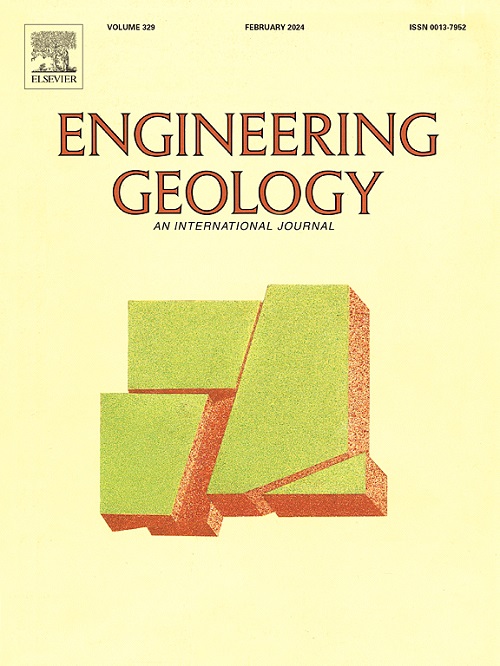Towards automatic delineation of landslide source and runout
IF 6.9
1区 工程技术
Q1 ENGINEERING, GEOLOGICAL
引用次数: 0
Abstract
Mapping landslide-depleted source areas is pivotal for refining predictive models and volume estimations, yet these critical regions are often conflated with landslide runouts, leading to sub-optimal assessments. The source (or scarp) areas are typically the regions where the actual failure occurs, providing crucial information on the initiation mechanisms and the nature of landslide propagation. Catering to this objective, we built a method based on a landslide’s topology and morphological information to delineate the source and runout margins. We develop and test this method in geomorphologically distinct regions such as Dominica, Turkey, Italy, Nepal, and Japan (Niigata) to showcase the model’s robust adaptive capacity. The model can demarcate the source and runout zones from landslide planforms found in inventories with accuracy deviations under 15%–20%. While distinguishing landslide source and runout areas, the model also considers triggering information and movement types. We also deploy the model in Chile, Japan (Hokkaido), Colombia, Papua New Guinea, and China. In these new regions, we found the mean area of the scarp to be consistently under 30% of the total landslide area. We additionally showcased the application of our model to the area–volume scaling of the coseismic landslides triggered by the 2018 Hokkaido Eastern Iburi Earthquake ( 6.6) in Japan. Our analysis revealed that area–volume fitting using the landslide source areas instead of the total landslide planforms or polygons improves the linear fit from R=0.49 to R=0.81. Our work could improve diverse landslide analysis, such as hazard and runout models, and facilitate a deeper understanding of landslide behaviour.
滑坡源与跳动的自动圈定
绘制滑坡枯竭源区的地图对于完善预测模型和体积估算至关重要,但这些关键区域往往与滑坡爆发区相混淆,导致评估结果不理想。震源(或陡坡)区域通常是实际发生破坏的区域,提供了关于滑坡发生机制和传播性质的关键信息。为了实现这一目标,我们建立了一种基于滑坡的拓扑和形态信息的方法来划定源和跳动边界。我们在地貌不同的地区开发并测试了这种方法,如多米尼加、土耳其、意大利、尼泊尔和日本(新潟),以展示该模型强大的适应能力。该模型能较好地从库存中发现的滑坡台地中划分出震源区和跳动区,精度偏差在15% ~ 20%之间。该模型在区分滑坡源区和跳动区的同时,还考虑了触发信息和运动类型。我们还在智利、日本(北海道)、哥伦比亚、巴布亚新几内亚和中国部署了该模型。在这些新区域,我们发现陡坡的平均面积一直低于滑坡总面积的30%。此外,我们还展示了我们的模型在2018年日本北海道东伊武里地震(MW 6.6)引发的同震滑坡的面积-体积缩放中的应用。我们的分析表明,使用滑坡源区而不是总滑坡平台或多边形的面积-体积拟合将线性拟合从R2=0.49提高到R2=0.81。我们的工作可以改善各种滑坡分析,如危险和跳动模型,并促进对滑坡行为的更深入理解。
本文章由计算机程序翻译,如有差异,请以英文原文为准。
求助全文
约1分钟内获得全文
求助全文
来源期刊

Engineering Geology
地学-地球科学综合
CiteScore
13.70
自引率
12.20%
发文量
327
审稿时长
5.6 months
期刊介绍:
Engineering Geology, an international interdisciplinary journal, serves as a bridge between earth sciences and engineering, focusing on geological and geotechnical engineering. It welcomes studies with relevance to engineering, environmental concerns, and safety, catering to engineering geologists with backgrounds in geology or civil/mining engineering. Topics include applied geomorphology, structural geology, geophysics, geochemistry, environmental geology, hydrogeology, land use planning, natural hazards, remote sensing, soil and rock mechanics, and applied geotechnical engineering. The journal provides a platform for research at the intersection of geology and engineering disciplines.
 求助内容:
求助内容: 应助结果提醒方式:
应助结果提醒方式:


